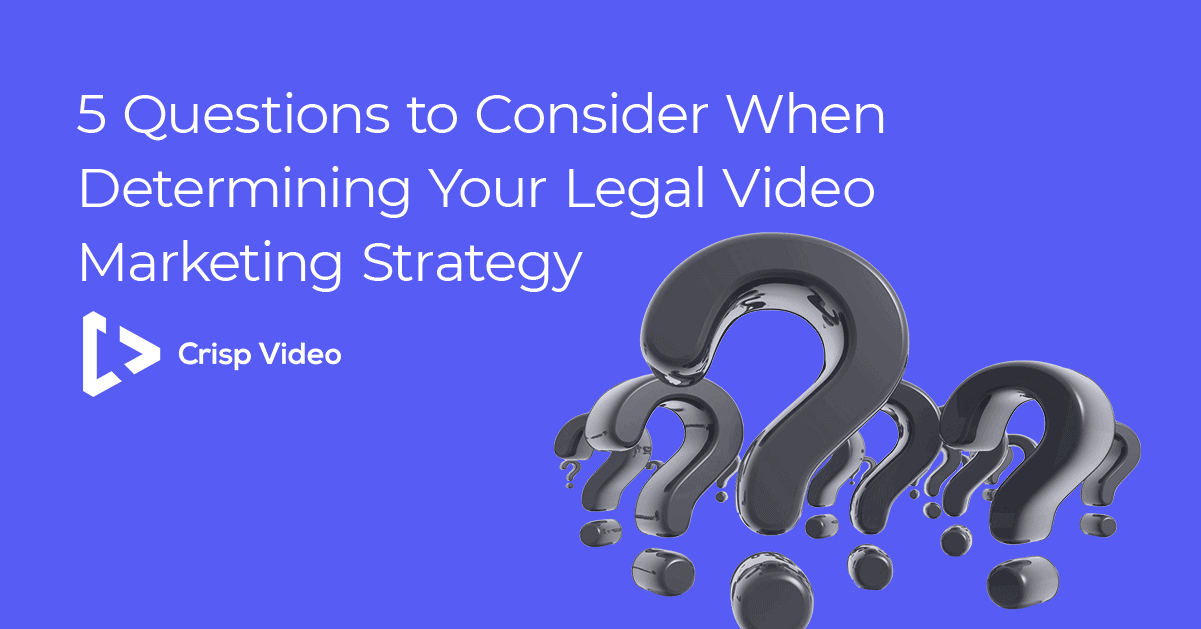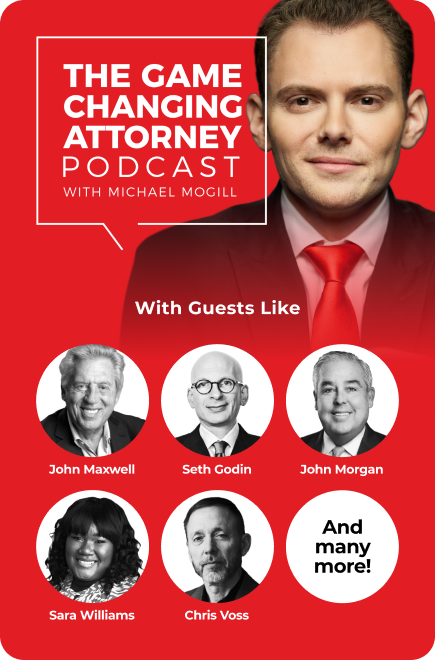The following is adapted from The Game Changing Attorney by Michael Mogill.
The days of attorneys succeeding with phone book and park bench advertisements are over. We live in a cluttered media landscape with thousands of marketing messages competing for limited consumer attention spans.
In this new world, video marketing is the most effective way attorneys can cut through the clutter to grow their brand, create credibility and trust with clients, and attract new business for their firm.
Once you decide to create a video marketing campaign, the question becomes: what kind of videos do you want to create? Do you want a thirty-second ad to run as a TV commercial, or do you want something with more substance, like a two-minute brand video?
The answer depends on some fundamental questions:
-
What’s the goal? How are you going to measure it?
-
Who’s the audience?
-
What is your message?
-
Where is it going? On what channels are you sharing it?
-
What are your capabilities in terms of production?
All these questions work in tandem. Different platforms support different video lengths—not to mention different audiences and age ranges. Audience and goals influence the platform, and the platform influences the type of content you produce. Videos for a website, Snapchat, or TV should all be approached in different ways.
Regardless of goal, audience, and platform, your video should tell a story. No other considerations matter if you don’t give your audience a reason to care.
Focus on creating relevant content and reaching the right people.
To help you design your video marketing strategy, let’s look at each question in more depth.

Question #1: What Are Your Goals?
When it comes to legal video, there are typically two types of goals:
- Attract more leads. This part is all about building authority. Educational and FAQ videos play a big role here, as they set you up as a knowledgeable and trustworthy resource (and drive traffic to your website).
- Convert leads into clients. Here, you connect with your target audience by attaching a face and personality to your firm. Brand videos and engaging client testimonials create memorable, emotional connections with prospective clients that drive action and can significantly improve conversions.
Whether you’re designing your marketing for web, print, or video, before creating your content, you must have clear objectives. Start by asking yourself this question: A year from today, what must happen for me to feel happy with my firm’s progress?
The key here is to be as specific as possible. “I want to make more money” doesn’t cut it, but “I want to grow our firm’s annual revenue to $1 million dollars by bringing in [# new clients per month] with an [average case value of $].”
If you’re not specific, you can’t quantify your progress, and you may be left with mixed feelings as to whether your campaign was successful or not.
Consider the barriers to your goals. What could prevent you from meeting them, and what can you do to protect against that happening?
Then consider your opportunities. What are the biggest areas or biggest opportunities that you can focus on and capture once your barriers have been eliminated?
When answering this question, consider all areas where there’s an opportunity for growth, progress, expansion, and advancement. For example, if one of your current barriers is that you can’t hire a new associate because your office can only hold so many people, it’s time to think about expanding to a new office. And then, once you open a new office in a new market, what new opportunities does that open for you?
Let’s put this in terms of video. Say that one of your barriers is the fact that you’re not standing out enough. By producing content that differentiates your firm from the competition, what kind of opportunities does that now create for you?
Question #2: Who is Your Audience?
Identify your ideal client and ensure you’re constructing messages tailored to them. What do they care about? Maybe your audience is blue-collar, and you happen to be a guy who drives around a pick-up truck. Details like this will help you connect a lot better than if you drove around in a Ferrari and had a waterfall in your office.
Maybe you love Brazilian jiu jitsu and practice it whenever you can in your spare time. If your ideal client does too, then you’ll want to play that aspect of yourself up.

Question #3: What is Your Message?
Remember, every attorney has a story and a unique value proposition that sets them apart from their competition. If you haven’t identified yours yet, now is a good time to do that by answering these three questions, then putting the responses together:
- Who is your ideal client? Describe them.
- What is their pain point? How do they need your help?
- What do you want your clients to know about you or your firm?
Take all three answers and combine them like this to create a unique value proposition:
I help [ideal clients] with [their pain point] because I [reason you became a lawyer].
Once you drill down on your unique value proposition, also known as your “why,” it’s time to think about how and where you want to showcase that story.
Question #4: What Channels Will You Use?
Different channels and platforms have different rules of engagement, whether formally or informally. You can’t put a two-hour-long video on Instagram, for instance.
Even if you did, that’s not what the platform is known for, and there’s no guarantee anyone would watch it for more than thirty seconds.
The rules for engagement across platforms are constantly changing. Instead of listing out every best practice for every platform here, I’ll leave you with the big picture instead. Whenever I’m producing video content for our clients, I ask these questions:
- “Why should anyone watch this?”
- “What factors would prevent somebody from watching this?”
- “What factors would prevent somebody from taking action after watching this?”
- “What are all the reasons this won’t work?”
Once I have answers, I begin tackling those objections one by one until I have a clearer picture of what kind of content and narrative are most likely to attract attention.
Question #5: What Does Production Look Like?
Once you’ve answered all these questions, you’ll know what kind of content will work best to reach your firm’s marketing goals. You’ll know who your audience is, where to reach them, and how to get their attention. And you’ll have a plan for marketing your content to your audience in a way that ensures you keep their attention.
The next step is to create the content. If you have a team in house, you can make the videos yourself. Here are a few pointers to produce high-quality content:
- Use an HD camera and invest in a tripod.
- Natural light is far better than office lighting.
- If you can get a single- or three-light setup, that’s ideal.
- For most videos, a lavalier, shotgun, or boom microphone will suffice.
- Think carefully when choosing a location.
- Plan things out but don’t overscript your video.
If you don’t have a team capable of producing the content in-house, you’ll need to hire professionals that are not only skilled and affordable, but have a clear picture of what you’re trying to do with these videos based on the questions you just answered.
To get our best guidance on defining your unique value proposition, communicating it through engaging video, and getting the most out of your law firm’s videos all in one comprehensive resource, check out The Game Changing Attorney. This is a book you’ll want to keep on your shelf to pull out every step of the way.








